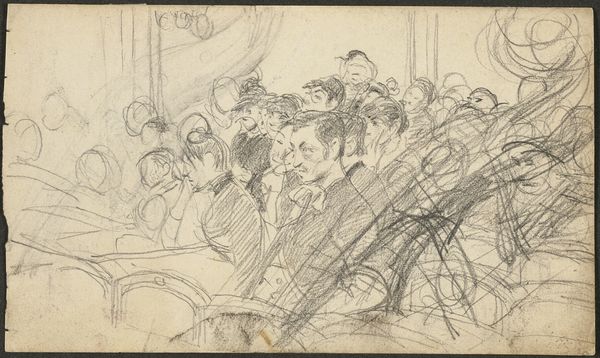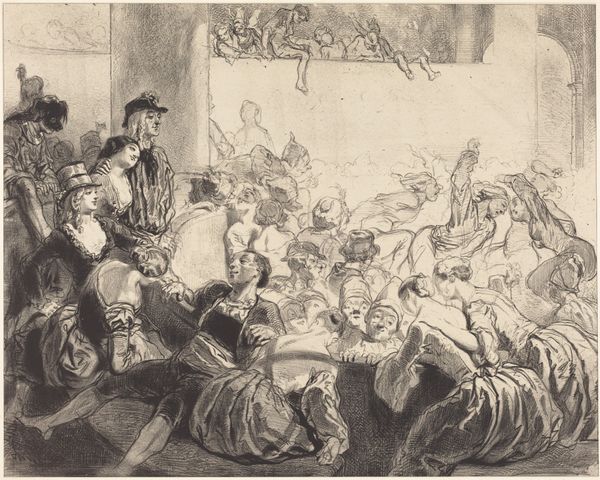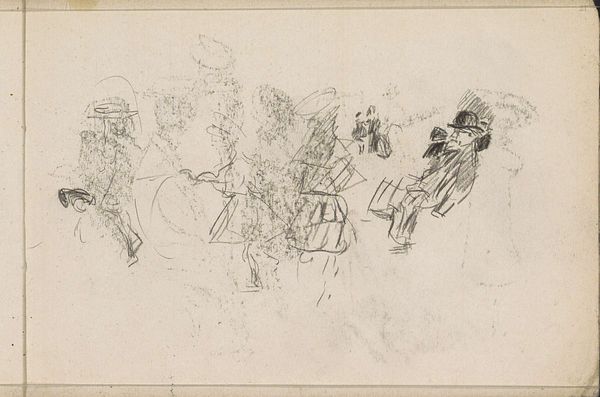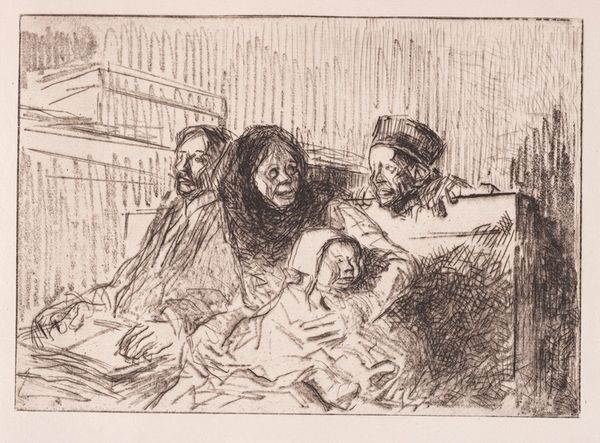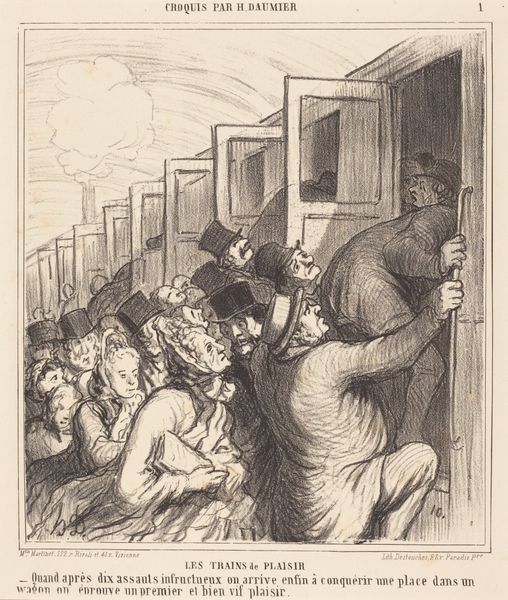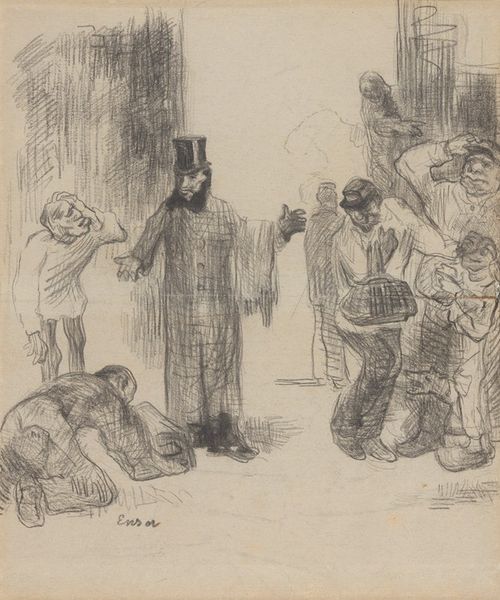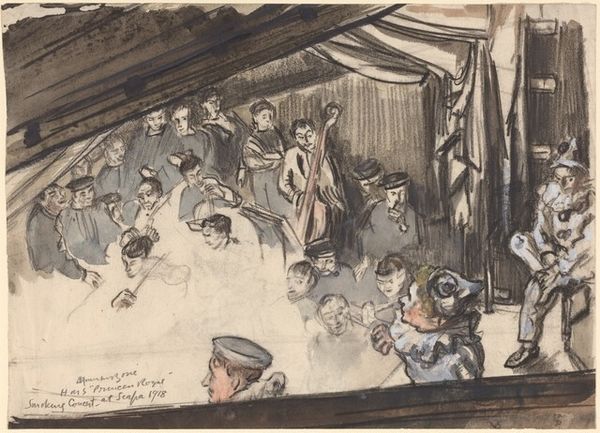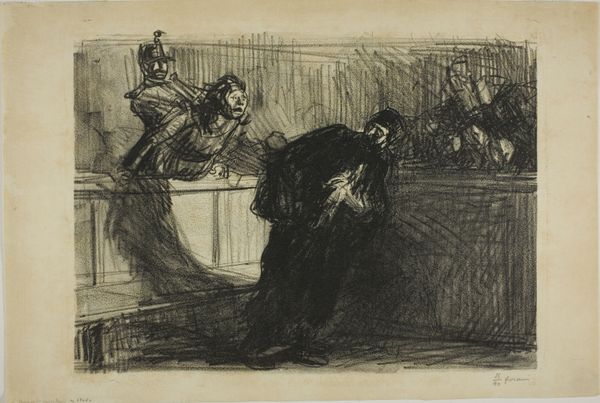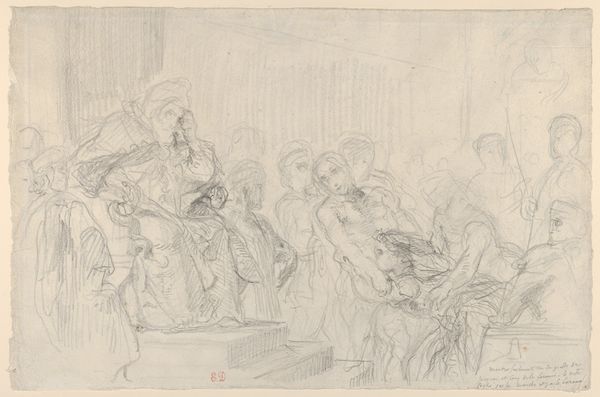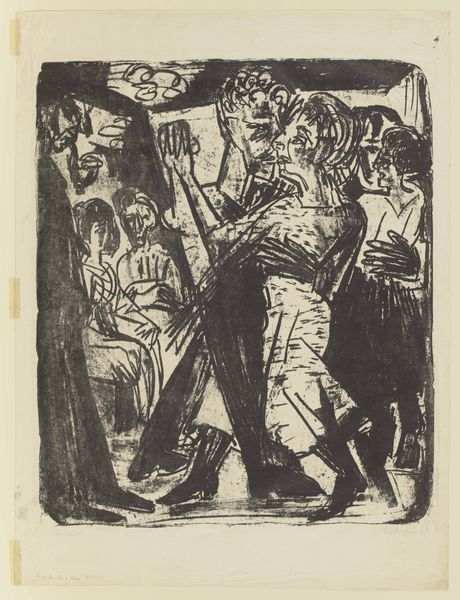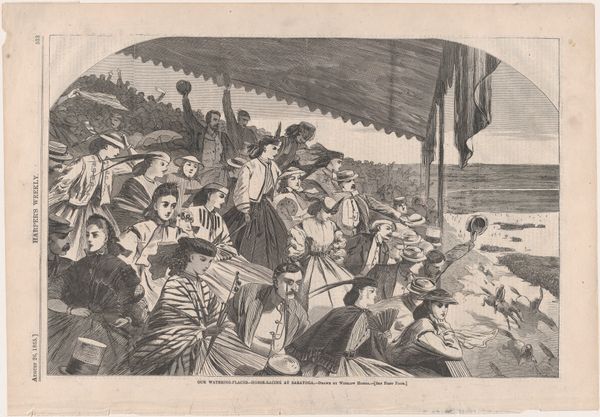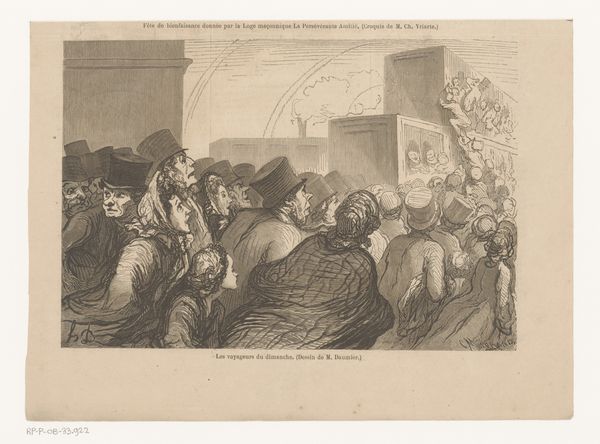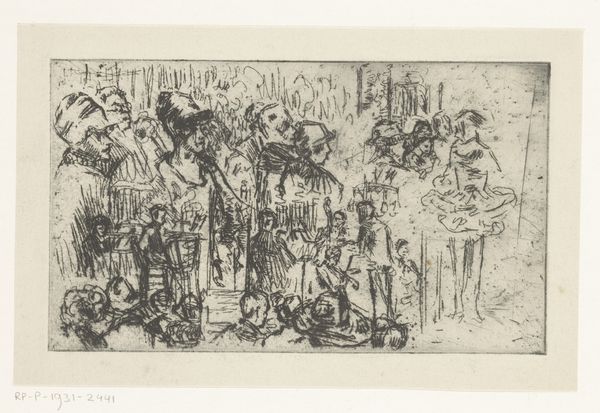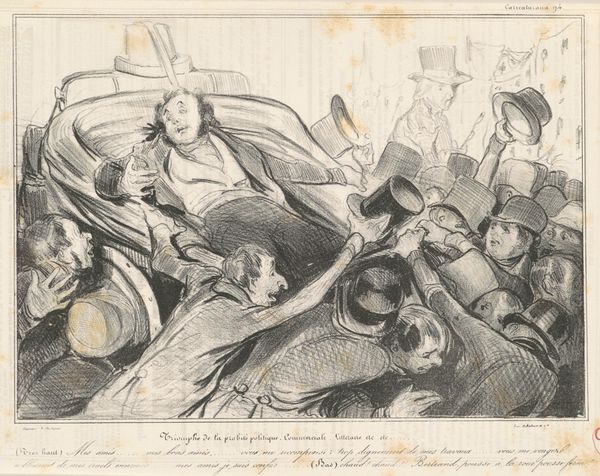
drawing, print, paper, pencil, graphite
#
portrait
#
drawing
#
ink drawing
#
pen drawing
# print
#
impressionism
#
pencil sketch
#
paper
#
pencil
#
graphite
#
cityscape
#
genre-painting
Dimensions: 92 × 150 mm
Copyright: Public Domain
Curator: So, let's delve into this captivating work, "Audience at a Parisian Theatre II" by Giovanni Boldini, circa 1885. It's currently held at The Art Institute of Chicago and is composed of graphite, pencil and ink on paper. Editor: Wow, my first thought? Organized chaos! I love how the figures blur together, all these curious faces... It’s a little disorienting, like eavesdropping on a dream. Curator: That feeling of dynamism is definitely intentional. Boldini was part of that glittering, late 19th-century social swirl. Think about how theatres were social epicenters—gender, class, power were always in play. What can a sketch like this tell us about these dynamics? Editor: I think it captures that restless energy perfectly. Everyone craning their necks, trying to be seen... It reminds me of backstage at one of my performances, honestly. A nervous hum, waiting for the lights to go down. Curator: Absolutely, and considering Boldini's other work, it speaks to how he viewed the Belle Époque, with its class divisions heightened. Look how he sketches the clothing; do we perceive class and status being represented, or subverted? It’s there in every fleeting line, a challenge to what that audience truly is, together in that place. Editor: Oh, without a doubt! And the giant cello looming in the foreground? Almost mocking their supposed elegance. Maybe Boldini’s whispering, "It's all a performance, darling." Curator: Yes, in that social spectacle, everything IS performance. That musical instrument might itself serve as another way to talk about not only wealth and access but who is being excluded. It's hard to truly get an honest portrayal because who is welcome into those spaces, physically and in representation, truly mattered. Editor: It all feels so fleeting, a scribble of a moment. Which I guess is the point, right? Makes you wonder what happened to all those faces, all that nervous energy, and it makes me wonder who controls history. Curator: Precisely. Boldini makes us question who has the stage, then and now. Editor: I will never look at a night at the theatre the same way! It's making me reflect upon representation, access and status. Curator: I find this drawing is relevant still, speaking to who participates in the "high arts," and who's on the outside, looking in.
Comments
No comments
Be the first to comment and join the conversation on the ultimate creative platform.
